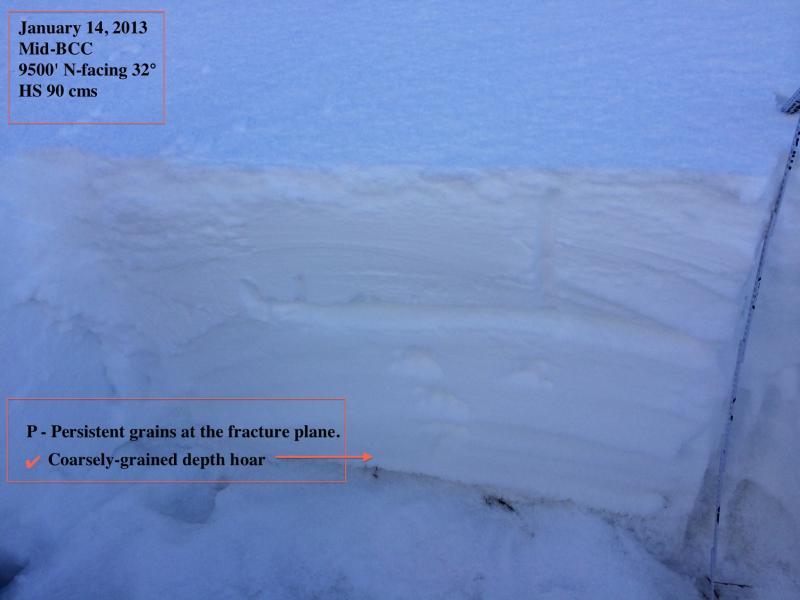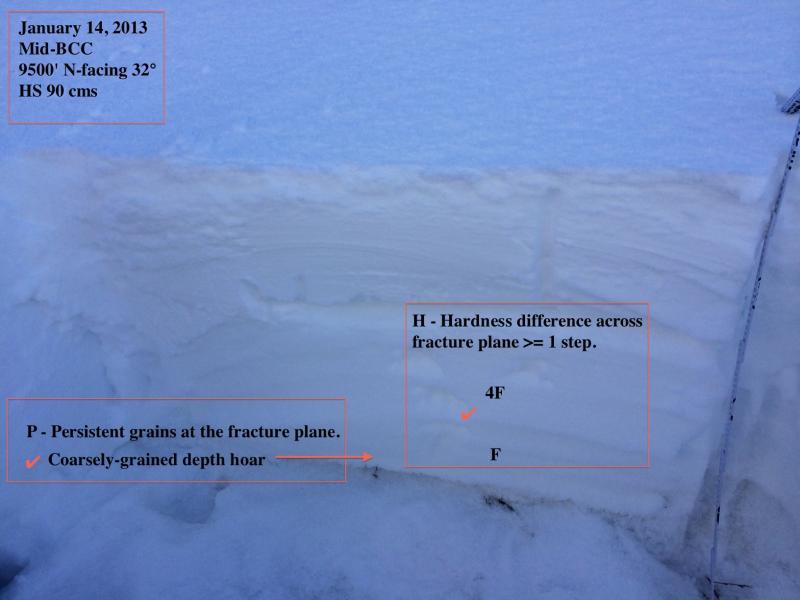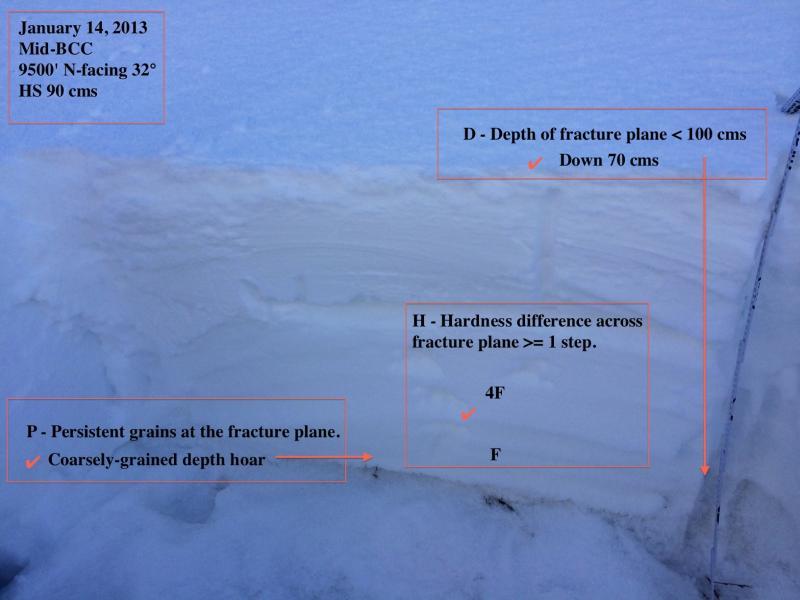Spent the afternoon teaching Avalanche 101 concepts to visiting young, free-rider, University of Puget Sound student. Focus today was how to evaluate the snowpack, and a cohesive slab on top of buried facets provided a nice outdoor laboratory for illustrating persistent weaknesses and deep slab instability.
Storm snow from Jan 9-13 has settled into a 45 cm 4F slab. Lots of quick pits were showing spatial variability, with some terrain receiving deeper amounts due to wind loading, some areas were scoured from the wind, and two or three different rime crusts of varying thicknesses present in the top 30-45 cms of snow.
Of particular interest were two extended column tests that produced ECTP21/Q1 and ECTP23/Q1, both failing down 70 cms in depth hoar near the ground. These tests had relatively high scores (21 and 23), but when it did fracture, the slabs popped out with a lot of energy, demonstrating the slab has energy to propagate and produce large avalanches.
The video shows one ECT on a 32 degree north aspect at 9600'. (Super nice fieldwork by the UPS freerider demonstrating their first ECT.)
A short while ago Drew mentioned in a forecast how Dylan Freed synthesized Ian McCammon's work on using 5 lemons to identify structural weaknesses in the snowpack. Dylan uses 3 lemons and identifies a PhD as (1) P - persistent weak layer, (2) H - hardness difference 1 step across the failure plane, and (3) D - depth of the weak layer is < 1 meter.
We used this PhD analogy today in our field work and it provided a perfect tool for evaluating our current structural weaknesses. In general, there are currently few obvious red flags present: no recent avalanches, no collapsing or cracking, and some steeper lines are being skied without incident. However, the snowpack today had a PhD and ECT tests were demonstrating that the slab has energy and capacity to fracture and propagate.
The following 3 photos show how we identified the PhD. (Thanks Drew & Dylan.)









